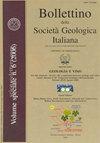New seismic evidence of the Messinian paleomorphology beneath Lake Maggiore area (Italy)
引用次数: 8
Abstract
Lake Maggiore is located on the boundary between the regions of Piedmont and Lombardy, in Northern Italy, and is one of the main sub-alpine lakes. The availability in this area of an extended seismic database composed by different grids projects (ISMES, PNR20/ Magadino and ENI Po Plain) associated with a well dataset (ViDEPI Project), offers the opportunity to investigate with unprecedented details the buried geomorphology of the paleo- canyons of the Ticino and Toce Rivers along the Southern Alps margin. The canyons were originated by the drop of the Mediterranean Sea level occurred during the Messinian Salinity Crisis (MSC) which paved the way to deep fluvial erosion along the Po Plain Basin margin. The paleo-canyon of the Ticino River is, for the first time, entirely displayed on a depth map from Magadino (Switzerland) to the Po Plain south of Sesto Calende (Italy) with a 3D representation option. The interpretation results confirm the existence of a continuous subsurface paleo-canyon of Messinian Age hidden beneath the recent sediments of Lake Maggiore. The canyon extends northward along the Ticino Valley in Switzerland and southward on the subsurface of the Po Plain (Italy). Seismic evidence indicates that the Messinian paleo- Ticino River probably had a different pathway as compared to the present day. Moreover, from seismic and geomorphological data interpretation, we hypothesize that the Toce, currently one of the main tributaries of Lake Maggiore, had a different path during the Messinian Age, and probably flowed the floor of the Orta Valley towards the Po Plain. Therefore, the fluvial capture of the river Toce River by the Ticino River is datable to post Messinian time.意大利马焦雷湖地区墨西尼亚古地貌的新地震证据
马焦雷湖位于意大利北部的皮埃蒙特和伦巴第地区之间,是主要的亚高山湖泊之一。该地区由不同网格项目(ISMES、PNR20/ Magadino和ENI Po Plain)和井数据集(ViDEPI项目)组成的扩展地震数据库的可用性,为研究南阿尔卑斯山边缘提契诺河和托斯河古峡谷的隐藏地貌提供了前所未有的详细信息。这些峡谷的形成是由于迈西尼亚盐度危机(MSC)期间地中海海平面的下降,为波河平原盆地边缘的深层河流侵蚀铺平了道路。从Magadino(瑞士)到Sesto Calende(意大利)南部的波河平原,提契诺河的古峡谷首次在深度地图上完整显示,并带有3D表示选项。解释结果证实了在马焦雷湖近期沉积物下存在一个连续的麦西尼亚时代的地下古峡谷。峡谷沿着瑞士的提契诺山谷向北延伸,向南延伸到波河平原(意大利)的地下。地震证据表明,墨西尼亚古提契诺河可能与现在的河道不同。此外,从地震和地貌资料的解释来看,我们假设Toce(目前是Maggiore湖的主要支流之一)在Messinian时代有不同的路径,并且可能从Orta山谷的底部流向波河平原。因此,提契诺河对托斯河的河流捕获可以追溯到后墨西尼亚时代。
本文章由计算机程序翻译,如有差异,请以英文原文为准。
求助全文
约1分钟内获得全文
求助全文

 求助内容:
求助内容: 应助结果提醒方式:
应助结果提醒方式:


